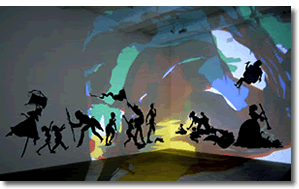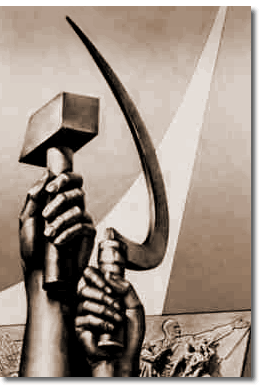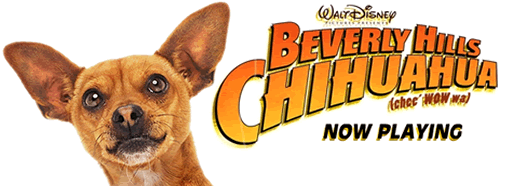
|
Disney, Aztecs, Longhorns, and Reds:
Ay Chihuahua and GTT
For many dogs are come about me:
and the council of the wicked layeth siege against me.
— Psalm 22:16 in the Book of Common Prayer.
By Ron Fritze from Athens, Alabama
Posted October 17, 2008
I would imagine that everyone who watches a bit of TV has seen a commercial for the new Disney production Beverly Hills Chihuahua. Some of you, I’m sure, have already taken the time to see it at a theater. As I child, I was a big fan of Disney. I struggled to keep the Seven Dwarfs’ names straight, was terrorized along with the original hundred and one Dalmatians, and cried when Bambi’s mom died.
My childhood tastes usually meandered in other directions, chiefly toward Donald Duck with Huey, Dewey, and Louie along with Uncle Scrooge. But I am not particularly fond of saccharine shows for kids such as Care Bears or, God forbid, Teletubbies!
Twylia and I decided to take a chance on Beverly Hills Chihuahua. We figured if the movie was half as good as the trailers, we would be okay — and most importantly, we own a Chihuahua. His name is Harley, and he is approaching four years old.
 Snarley Harley
Snarley Harley
My first meeting with Harley was not auspicious. Twylia had just joined me here in Athens, having driven up from Texas with the dogs, which included a new addition, Harley, who was a Hurricane Rita refugee. Twylia asked me to take the dogs out to do their late night business. Everyone headed out on command — every dog but Harley. He was determined to stay in bed and began to snarl when I sought to change his mind. Undeterred, I bent down to pick him up, at which point the little devil bit me, drawing blood. So I wrapped him up in a towel and took the snarling critter outside, giving him noogies all the while.
After that I started calling him Snarley, sometimes Snarl, but gradually we became accustomed to one another, and now we are great friends. Twylia calls him ChiChi, which has turned out to be sort of prophetic, as you will see below. Chihuahuas being the smart little dogs that they are, Harley now answers to his given name as well as Snarley, Snarl, and ChiChi with equal enthusiasm.
An Irresistible Combination
Another thing I noticed in the advertising about Beverly Hills Chihuahua is that some scenes take place in Aztec ruins. That also aroused my curiosity. For me, Chihuahuas and lost pre-Columbian cities are an irresistible combination. So on opening night in Athens, Twylia and I motored on over to the local theater. There we joined a mixed crowd of couples of all ages, many far older than us, and kids of all ages, for a thoroughly enjoyable experience. From the sounds of the laughter, so did everyone else.
While little kids can enjoy the movie, the dogs are portrayed as adults, providing the opportunity for some subtle humor — and some not so subtle humor, too — that includes quotes and allusions to other movies. Also important for the sensitive among us, neither Chihuahuas, nor other dogs, nor humans of any stripe were killed during the showing of the movie or in the making of it.
An Ancient, Brave Race of Dogs
Guess what? The movie does have some history — and that is what I am going to talk about. Disney actually does history pretty well.
 They sometimes alter the facts to fit a story line or theme, but they are usually faithful to the spirit of the history.
They sometimes alter the facts to fit a story line or theme, but they are usually faithful to the spirit of the history.
Beverly Hills Chihuahua has a scene where the heroine Chihuahua Chloe and the heroic German Shepherd Delgado are lost in the Mexican desert. They are rescued by a pack of Chihuahuas, led by a long-haired Chihuahua named Montezuma, or Monte for short — and being a Chihuahua, he is indeed a short dog. Monte and his merry band take Chloe and Delgado back to their home in the ruins of a lost Aztec city, where they begin to coach the spoiled Chloe in Chihuahua self-esteem. Monte proclaims that Chihuahuas are an ancient and brave race of dogs whose origins go back to the Aztecs.
This statement raised a touch of historical skepticism in my mind. I had read that the Aztecs raised little dogs like we raise chickens for a meal. Dog protein would have been important to the Aztecs as they lacked any large domesticated animals for a supply of complex proteins. Otherwise, their complex proteins came from animals they hunted, including deer. For the elite, protein came from cannibalizing the remains of war captives after they were sacrificed to the blood-thirsty Aztec gods. History shows us that the Aztecs did have little dogs, and that they were eaten for supper, but history also shows that those hapless creatures were not Chihuahuas.
Here Techichi Techichi!
It turns out that Monte and Disney were not giving Chihuahuas sufficient credit for being an ancient breed of dog. The Aztecs did not create the Chihuahua breed. Evidence for the existence of Chihuahuas dates back at least to the ninth century A.D. during the era of the Toltec civilization, which preceded the Aztecs. The Toltecs had Chihuahua-like dog called a techichi. Now we know why Harley so readily answers to the name ChiChi.
Chihuahuas may even predate the Mayan civilization, although the archaeological evidence for that is unclear. Still, Disney’s understanding of Chihuahua history was better than mine before doing my homework.
GTT for SHD — and It's All Good.
The day after watching the movie, I flew to Texas for a meeting of the Society for the History of Discoveries (SHD) at the library of the University of Texas at Arlington. It was my first trip back to Texas in about five years. So my Gone To Texas (GTT) was a homecoming of sorts because, back in the day, Texas was home for nineteen years.
It was also my first time to attend an SHD meeting as a member of the council, which included the responsibility of auditing the books with the treasurer. We got that done on Sunday morning, and then most attendees gathered for a bus tour of Fort Worth. The tour provided an interesting perambulation through old Fort Worth.
 We saw the beautifully restored downtown, much of it courtesy of the Bass brothers. Next we made our way to the stockyards, where we saw a miniature cattle drive of about fifteen Longhorns — I mean the cows, not University of Texas football fans. I had never been up-close to a Longhorn, so that was an experience to remember. These Longhorns were pretty docile, but then, they did the stockyard walk for a living, and whatever you might think about having urban cowboys herding those beasts along a street on a daily basis, for the cows it sure beats being turned into hamburger. We ate lunch at the Star Café, nice and quaintly Western. The stockyards brim with places of interest and novelty. I recommend it.
From the stockyards our bus took us to the Modern Art Museum, where an excellent docent guided our tour. Sadly, the tour began with a troubling exhibit. The Modern Museum was showing an exhibit by Kara Walker, whose art is a series of silhouettes, technically quite good.
 Unfortunately, her subject matter can be a bit objectionable. Frequent scatological and sexual references, particularly fellatio, appear in her silhouettes, which feature a faux ante-bellum setting. An African-American, Ms. Walker has the distinction of being the youngest person ever awarded a MacArthur Grant for genius at age twenty-seven, which was about twelve years ago. Some two hundred artists, mostly African American, wrote the MacArthur Foundation to protest the award and ask that it be rescinded. Given what I saw, I can’t say that I disagree with them. But the MacArthur Foundation held its ground and the award stuck.
Unfortunately, her subject matter can be a bit objectionable. Frequent scatological and sexual references, particularly fellatio, appear in her silhouettes, which feature a faux ante-bellum setting. An African-American, Ms. Walker has the distinction of being the youngest person ever awarded a MacArthur Grant for genius at age twenty-seven, which was about twelve years ago. Some two hundred artists, mostly African American, wrote the MacArthur Foundation to protest the award and ask that it be rescinded. Given what I saw, I can’t say that I disagree with them. But the MacArthur Foundation held its ground and the award stuck.
But I had had enough and headed off to the Kimbell Museum across the street. My assessment: Kimbell, yo; Modern, no!
SHD meetings are enjoyable, low-key events. With fewer than a hundred and fifty attendees, the conferences are always small and friendly — and the one in Texas was no exception. I saw people I had met in Chicago at the last meeting, which was very good, and I got to meet more new people. Many couples come to the meetings, and I hope that next year Twylia can come along.
There's a Red Surprise in the Garden.
Besides some interesting papers being read, another notable event was getting to visit the private library of Harlan Crow in Dallas. Mr. Crow, a renowned collector of books and manuscripts, has built a two-story library at his home. In physical size and furnishings, Mr. Crow’s library reminds me in style and substance of the libraries of various Cambridge and Oxford colleges with wood paneling, beautiful bookcases, and library tables for study.
Walking through Mr. Crow’s garden also provides a unique experience because he has decorated it with statuary collected from former Communists countries, particularly Russia.
 Statues of Lenin, Marx, and other Communist leaders line the paths of the garden. One among the many interesting figures populating the garden is the likeness of Felix Dzerzhinsky, who was the first head of CHEKA, the original name for the Soviet secret police organization that eventually became known as the KGB.
Statues of Lenin, Marx, and other Communist leaders line the paths of the garden. One among the many interesting figures populating the garden is the likeness of Felix Dzerzhinsky, who was the first head of CHEKA, the original name for the Soviet secret police organization that eventually became known as the KGB.
The Dzerzhinsky statute once stood in front of the KGB headquarters in Moscow, but by the time Twylia and I visited Moscow in 1996, it had been removed and replaced with a flowerbed of red tulips. Little did we known that old Dzerzhinsky would be sweating in the blazing heat of a Texas summer, stuck in not-so-lonely exile in the company of a rogues gallery of old Reds. Not to worry, my fellow Americans: Mr. Crow is not some closet Red Texan. I strongly suspect he voted for Dubbya — and on that topic I’ve nothing more to say.
At this date the Crow library and garden are not open to the public, but plans are in the works to make it so. When it does open, and you find yourself on a holiday in Dallas, I suggest you skip that other book depository of sad memory, and instead enjoy the beauty of Mr. Crow’s library and garden.
Next year SHD meets in Raleigh, North Carolina. I am looking forward to it.
Dallas is a baby Manhattan;
Fort Worth is a cattle annex.
— John Gunther, 1947.
Click on the black panther to read Ron Fritze's previous essay,
"The Transmigration of an Evil Soul: of X-Files and Empedocles."
|

|















|

|





 They sometimes alter the facts to fit a story line or theme, but they are usually faithful to the spirit of the history.
They sometimes alter the facts to fit a story line or theme, but they are usually faithful to the spirit of the history.

 Unfortunately, her subject matter can be a bit objectionable. Frequent scatological and sexual references, particularly fellatio, appear in her silhouettes, which feature a faux ante-bellum setting. An African-American, Ms. Walker has the distinction of being the youngest person ever awarded a MacArthur Grant for genius at age twenty-seven, which was about twelve years ago. Some two hundred artists, mostly African American, wrote the MacArthur Foundation to protest the award and ask that it be rescinded. Given what I saw, I can’t say that I disagree with them. But the MacArthur Foundation held its ground and the award stuck.
Unfortunately, her subject matter can be a bit objectionable. Frequent scatological and sexual references, particularly fellatio, appear in her silhouettes, which feature a faux ante-bellum setting. An African-American, Ms. Walker has the distinction of being the youngest person ever awarded a MacArthur Grant for genius at age twenty-seven, which was about twelve years ago. Some two hundred artists, mostly African American, wrote the MacArthur Foundation to protest the award and ask that it be rescinded. Given what I saw, I can’t say that I disagree with them. But the MacArthur Foundation held its ground and the award stuck. Statues of Lenin, Marx, and other Communist leaders line the paths of the garden. One among the many interesting figures populating the garden is the likeness of Felix Dzerzhinsky, who was the first head of CHEKA, the original name for the Soviet secret police organization that eventually became known as the KGB.
Statues of Lenin, Marx, and other Communist leaders line the paths of the garden. One among the many interesting figures populating the garden is the likeness of Felix Dzerzhinsky, who was the first head of CHEKA, the original name for the Soviet secret police organization that eventually became known as the KGB.